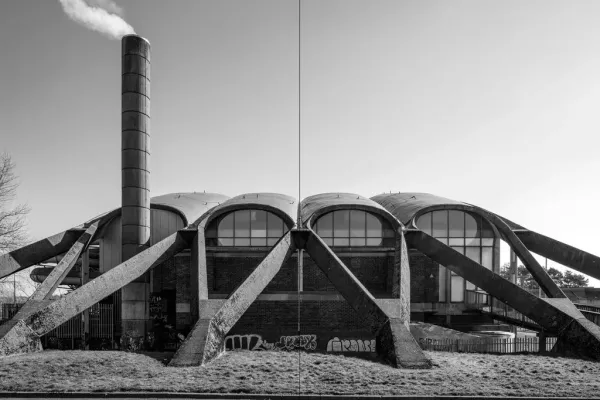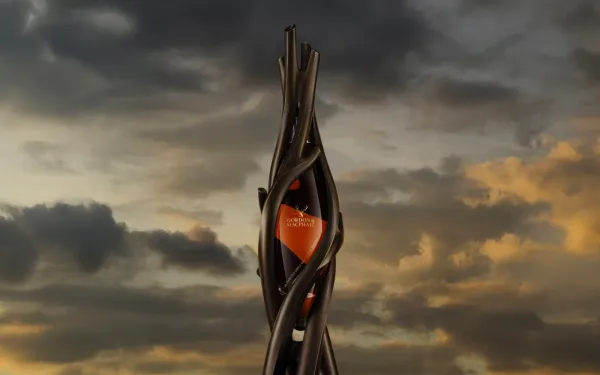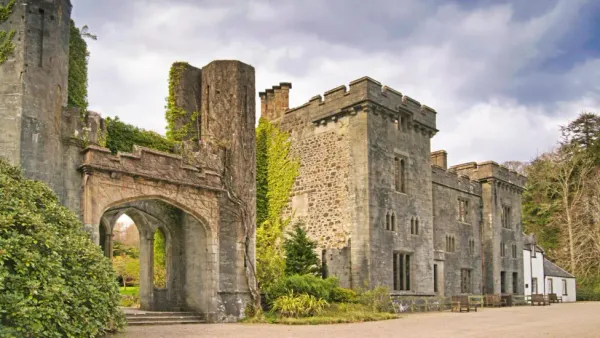The Thistle in the Name

To name a publication The Thistle is not merely to borrow a botanical flourish; it is to invoke an aspiration: to be at once watchful, rooted and capable of defence — not of land, but of ideas, culture and durable networks of belonging. It declares our intent to publish work alert to the times, attentive and rooted in place.
The year was 1263 and the longships of King Haakon IV of Norway pressed upon the Scottish coast. On a storm-battered night, a party of Norsemen reputedly crept ashore and proceeded barefoot to surprise a sleeping Scottish encampment. As fortune has it, one of their number trod on a prickly plant and cried out; that cry woke the defenders, sounded the alarm and ultimately foiled the raid. Whether this precise puncture of fate happened exactly as told matters less than the message the story has carried: vigilance may be humble, even accidental, and yet it can save a people. The thistle, in that telling, is the plant that wakes the watchman, the land itself betraying the intruders.
Legend gave the plant its mythic footing; statecraft soon gave it its enduring form. What began as a repository of collective temperament was soon translated into heraldry, chivalry and currency. By the late fifteenth century, the plant had been rendered into royal objects on coinage and badges, entering the visual language of the realm. From stone and silver, the thistle moved into the armoury of heralds; it is today one of the long-lived visual tokens by which Scotland has given form to notions of distinction — a compact allegory of a people who guard themselves and flourish where others find hardship.
The plant’s formal personification as a chivalric sign came most clearly in 1687 with the creation of the Most Ancient and Most Noble Order of the Thistle by James VII and II. Its motto, Nemo me impune lacessit ('no one provokes me with impunity'), gives voice to the emblem’s more martial aspect: not belligerence for its own sake, but a refusal to tolerate encroachment. That line of Latin has lodged itself into regimental colours and civic badges across Scotland; it is an echo of the thistle’s tougher, forbidding aspect, the promise of consequence to any who would overrun what it protects. Today, the thistle lives on in many forms: on civic arms, coins, corporate devices and memorabilia. It is a shorthand for Scottish identity, thriving where tradition meets enterprise and where Scottish culture is practised around the world.
Why celebrate an emblem that pricks as much as it flowers? Because the thistle gathers together a set of practical ideas that are useful to a civic culture trying to be both proud and mature. It is a sign of resilience — of a living presence that thrives on marginal ground — and of dignity that does not require theatrical displays. Where soil is poor and weather harsh, its purple crown stands firm. Unlike the saltire’s divine pretensions, the thistle is domestic: seen along the field's edge and familiar to the eye. From the grand historical narratives, it distils a practical ethic: tend what you have; guard what matters; accept that beauty and defence may inhabit the same form. Rather than a banner waved in triumph, it asserts itself as a steadfast marker of character.
That is why our choice of name is deliberate, and why the emblem matters for a paper with The Thistle as its masthead. We do not ponder wistfully upon the past. Rather, we accept the emblem as a working metaphor for a publication that intends to steward, interrogate and renew. The thistle’s lesson — to be watchful, to flourish in adverse conditions, to wear dignity like armour — maps to a mission-driven journalism that will champion craft and commerce, investigate the cultural networks that bind communities and convene conversations that matter beyond the country’s confines. The qualities the thistle signifies are precisely those we aim to practise in print. Our work as journalists, essayists and conveners is to be vigilant — to notice and to rouse; to be rooted — to understand context, place and provenance; to be resilient — to publish in ways that endure; and to be capacious — to make room for beauty, debate and renewal.
The Thistle will therefore wear its name as a posture. We will defend the dignity of careful inquiry without shrinking from contest. We will champion cultural endeavour that is forward-looking rather than merely antiquarian. We will put stories in the soil: reporting that links people to place, that honours conservation and creation, that explores identity as both inheritance and labour. In doing so we accept neither nostalgia’s softening nor triumphalism’s hardness. We will be exacting, not exclusionary; proud, not petty. We will publish with steady resolve; to be guardians, not gatekeepers, of debate; to insist on accuracy as a form of civic defence; and to seek out the stories of those who sustain communities, from makers and scholars to entrepreneurs, custodians of craft and guardians of memory.
Emblems thrive because people make them live. The thistle’s sovereign aspect is not the province of crowns alone; it represents a dominion of the spirit — a realm that belongs to communities who carry memory, practise stewardship and translate allegiance into action. In choosing this emblem for our name, we stake a claim not to a nostalgia for pageantry but to an active, disciplined and respectful engagement with Scotland’s culture and voice in the world.
The thistle rouses us to vigilance. It asks that we be awake to what is passing and what should be preserved; that we read history without letting it govern our present; and that we fashion institutions — editorial, civic and cultural — that can sustain a people’s dignity across generations. The Thistle will be such an institution in the making: discerning where it must be, expansive where it should be and always attentive to the quiet currents that hold public life together.





